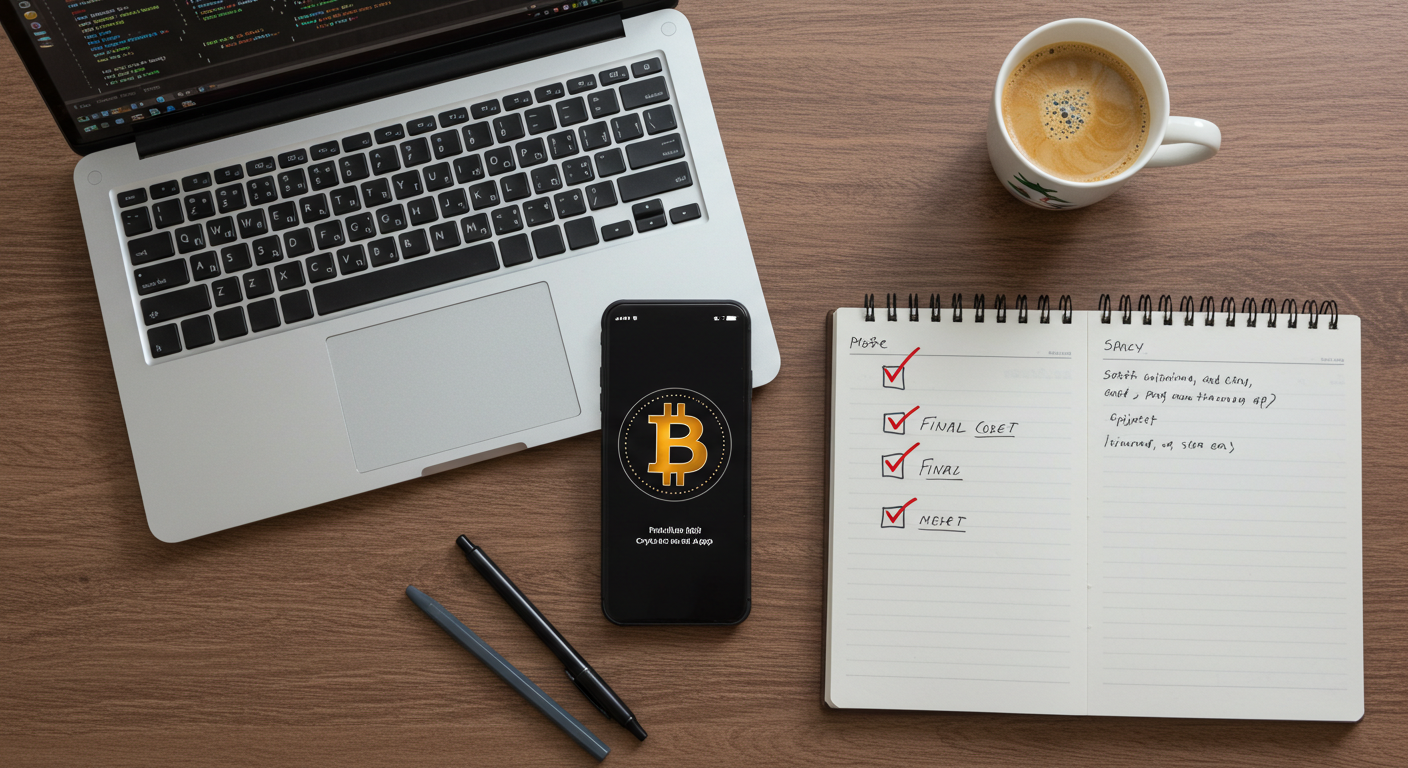7-Day Challenge Complete: A Pro-Level App in 10 Hours 45 Minutes (with a Bonus Round)
One week ago, I started a public challenge: build a functional crypto tracking app in just seven days. The goal was to test my own limits, refresh my React Native skills, and document every step as a case study in software engineering. This final post is a comprehensive retrospective of that sprint, building on the work from Day 6, where I focused on the art of UI polish and animation.
Today, the challenge is complete.
Not only is the application finished, but the entire project—from initial setup to a polished final product with bonus features—was completed in 10 hours and 45 minutes of focused development time. This was done across just a few days, which is proof of what’s possible when deep experience is paired with modern tools.
This post is a showcase of the final product, a reflection on what it takes to build at speed, and a look at the real-world problems that define modern mobile development.
The Final Product: “Signal” Crypto Dashboard
First, let’s see the app in action. Here is a full demonstration of all its features, including the bonus pull-to-refresh and search functionality.
The application is more than just a proof-of-concept; it’s a production-ready foundation. You can explore the complete, well-documented source code for the project on GitHub: https://github.com/areekaras/signal-crypto-dashboard
The Journey: A Day-by-Day Retrospective
This project was a marathon sprint. The entire story is captured in my daily blog posts, which offer a granular look at the technical hurdles and solutions at each stage.
- Day 1: The First Boss Battle (3h 40m): A simple setup turned into an intense debugging session, proving a stable environment is the most critical prerequisite.
- Day 2: Hitting Hyperspeed (1h 55m): With the setup stable, progress exploded. I built the app’s entire skeleton and displayed a live list of data.
- Day 3: The “Wow” Factor (1h 25m): This session added dynamic features like a live WebSocket feed and data visualization with charting.
- Day 4: The 40-Minute Optimization (40m): A short but critical session where I used
React.memoto fix a major re-rendering issue, showing that performance is a feature. - Day 5: The Reality of Senior Engineering (2h 35m): Building the “Watchlist” feature uncovered a cascade of bugs, turning the day into a deep dive into debugging and architecture.
- Day 6: The Art of Polish (45m): The final coding session was dedicated to user experience, refining the UI and adding subtle animations to make the app feel delightful.
P.S. — The Bonus Round
The official 7-day challenge was complete, but I couldn’t resist one final session to add a layer of professional polish. In a focused 25-minute “bonus round,” I fixed a nagging animation bug and added two of the most-requested quality-of-life features: pull-to-refresh and a performant search bar.
This extra effort is a core part of my engineering philosophy. I’ve written a separate, detailed technical breakdown of this entire bonus session, which you can read below.
Read the Bonus Post: The 7-Day Challenge: Bonus Round — 3 Pro-Level Features in 25 Minutes
My Approach: Experience Amplified by AI
This project was a test of a modern workflow. With over 8 years of experience, my foundation is in system design and robust architecture. I understand the “why” behind the code.
For this challenge, I paired that experience with an AI coding assistant (Gemini). The AI was not a replacement for my skills; it was an amplifier. It acted as a tireless pair programmer, handling boilerplate tasks and generating initial component structures based on my precise prompts. This synergy allowed me to focus my energy on high-impact, senior-level work.
The Final Day’s Work: Professional Documentation
With the coding complete, the final task for Day 7 is one of the most important features of any professional project: documentation.
I will be creating a comprehensive README.md file for the project’s GitHub repository. A great README is the front door to your project. It explains the “why” behind technical decisions, outlines the architecture, and provides a clear guide for anyone to run the app themselves. For a portfolio piece, this is non-negotiable.
A Final Thought: The Engineer Behind the Code
This challenge was more than just a coding exercise. It was a demonstration of the principles I bring to every project I undertake. My persistence, discipline, and passion for learning are evident in the work.
For teams looking to implement modern solutions, my ability to pair a deep engineering foundation with a rapid, disciplined learning process is a powerful combination. This challenge proves that I don’t just learn new technologies; I stress-test them, find their limits, and build high-quality, documented products with them.
If your team is looking for an engineer who brings not just technical skill, but also resilience and a passion for building things the right way, I am confident I can be that person.
Thank you for following along on this journey.
Join the Discussion
1. What part of the 7-day challenge was most interesting to you?
- (A) The initial setup struggles (Day 1).
- (B) The deep-dive debugging sessions (Day 3 & 5).
- (C) The final thoughts on combining experience with AI.
Let me know your answer (A, B, or C) in the comments below!
2. A Question For You: After seeing this week-long journey, what is one piece of advice you would give to someone starting their own “build in public” challenge?
This 7-day sprint is complete, but the expedition continues. Get my future posts directly in your inbox by joining my newsletter.
